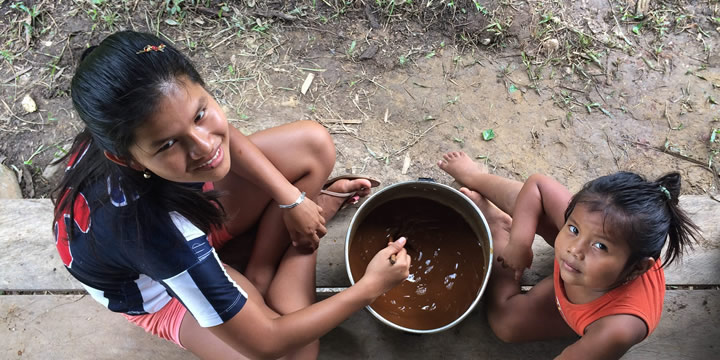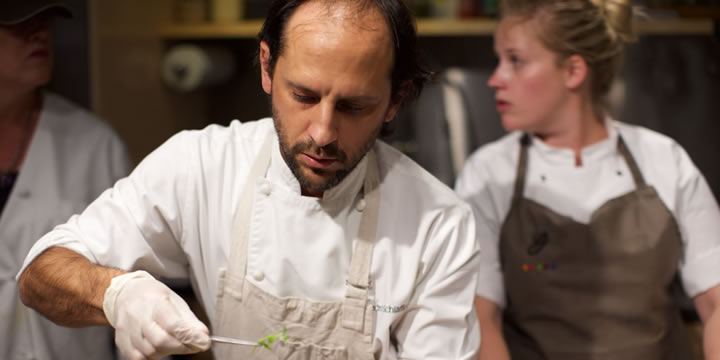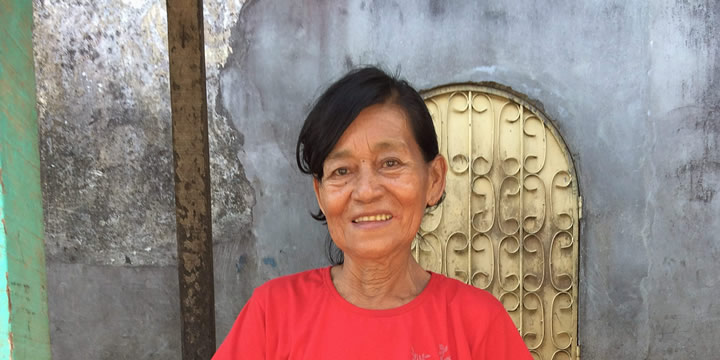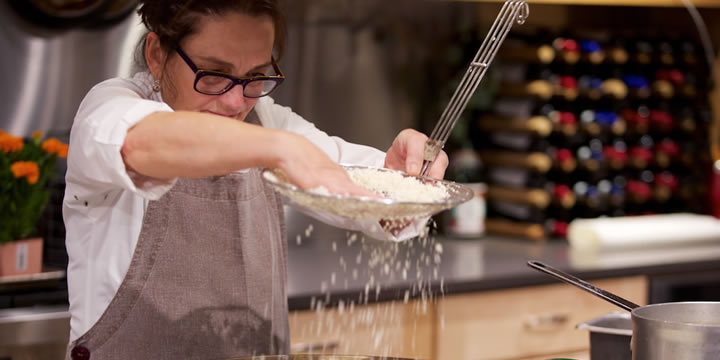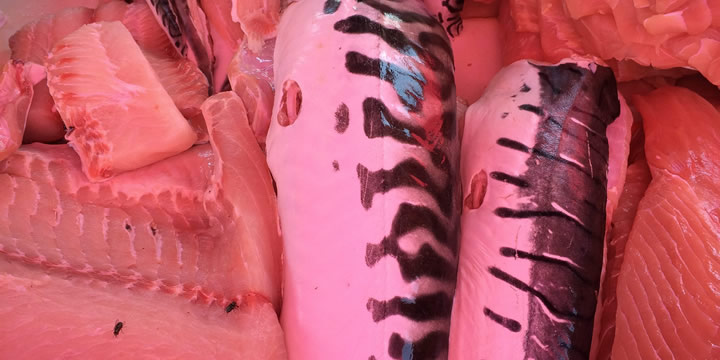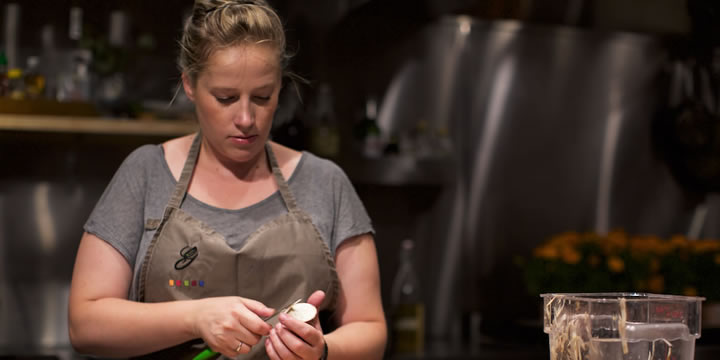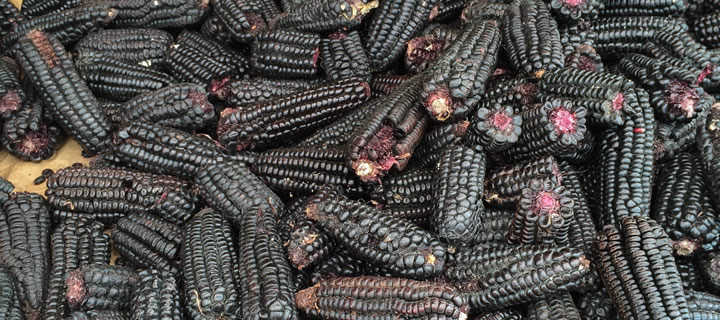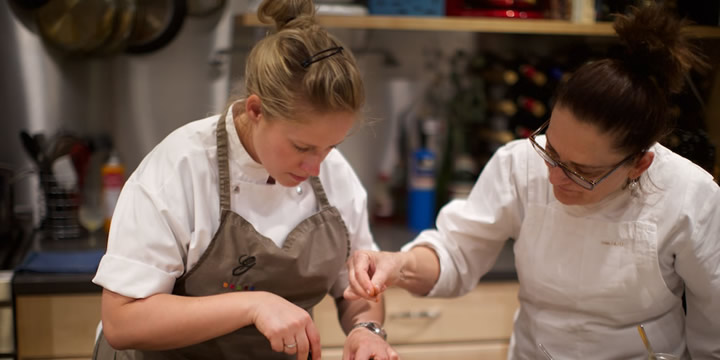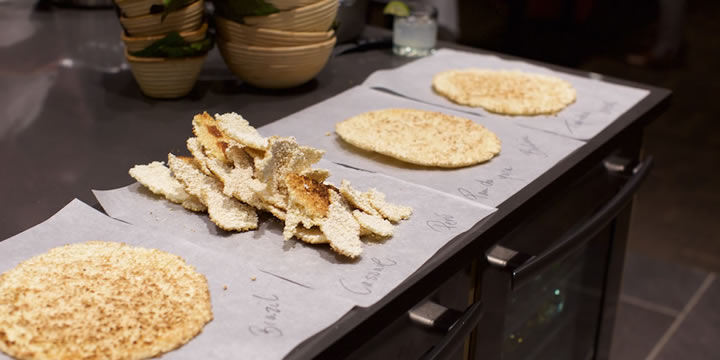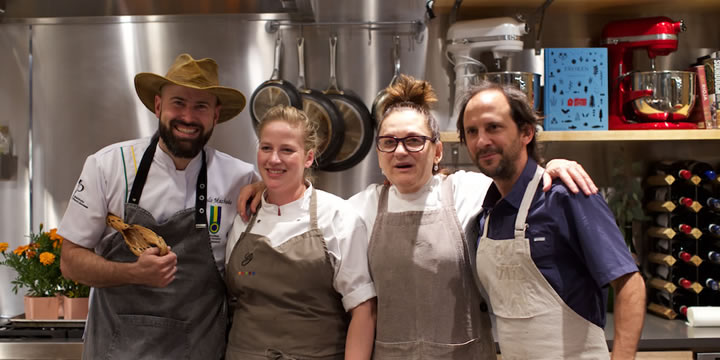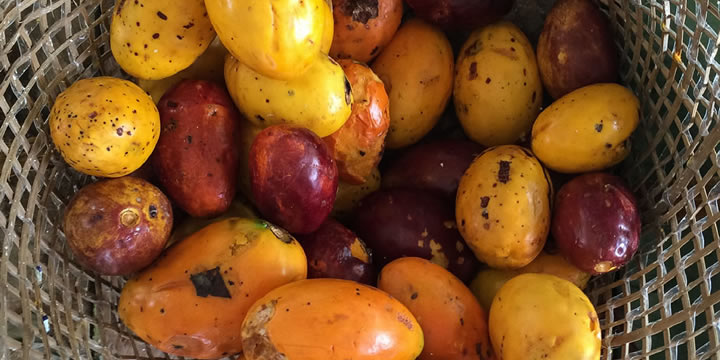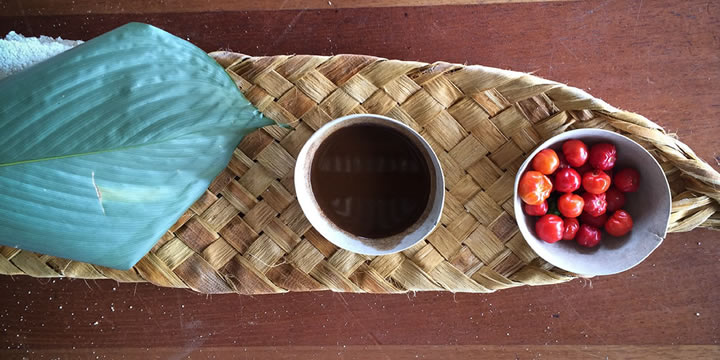<<Initiative Home << All Initiatives
A new movement, linking food, conservation and communities is taking shape in the Amazon.
Forest Trends, Canopy Bridge and some of Latin America’s best-known and most influential chefs are looking to use the Amazon’s vast cornucopia of healthy ingredients and traditional cuisines to bring the flavors and nutrition of the rainforest to tables in indigenous villages and big city restaurants, in the process creating new markets and businesses for products that help protect the forest and nurture local communities.
The Amazon Pantry
The Amazon´s forests, lands, and waters have for millennia provided a diverse cornucopia of food and ingredients that have transformed biodiversity into gastronomic pleasure – from a log fire in the jungle to some of the best restaurants in the world. Some products, such as cocoa beans and Brazil nuts, are well known worldwide. Others are in the process of expanding more widely into the national and international markets, for example camu camu, açai, sacha inchi, and paicheamongst others. But there is an even greater, almost infinite diversity of species, varieties, ingredients, and uses yet to be discovered in the culturally and biologically rich world of the Amazon. With over 40,000 species of plants, at least 3,000 species of fish, and another 3,000 kinds of fruit, the Amazon pantry is bursting with potential.
This diversity is threatened by pressure from other sorts of food production – soybeans, beef cattle, cocoa plantations, and oil palm – the main drivers of deforestation in the region.
But savoring the products of the rainforest can help save it.
An Amazon Food Movement
In Latin America, as in the US and Europe, a new food movement is taking shape, with interest in healthy and novel ingredients, and a commitment to origins and supporting producers. A new crop of chefs and food enthusiasts is revitalizing national cultures and turning an enthusiastic and appreciative eye to local ingredients like never before. The boom in food culture has been nothing short of astounding with new restaurants, organic markets, and novel ingredients.
At the vanguard are chefs at standout Latin American restaurants, several ranked as amongst the best in the world, who are redefining national food culture, and increasingly incorporating Amazon ingredients into their offerings. Pedro Miguel Schiaffino, of Lima’s amaZ and Malabar, has been a pioneer in reinterpreting Amazon ingredients in his sophisticated cuisine. Across Latin America, other leading exponents include Paulo Machado, Mara Salles (Tordesilhas) and Thiago Castanho (Remanso do Bosque) in Brazil, Eduardo Martinez (Mini-Mal) in Colombia, Kamilla Seidler and Michelangelo Cestari of Gustu in La Paz, and Peru’s Mitsuharu Tsumura (Maido) and Virgilio Martínez (Central).
These chefs and restaurants are at the forefront, educating their visitors dish by dish, making the Amazon’s biodiversity and extraordinary potential palpable.
An Agent for Change
Conservation in the Amazon requires society´s fully valuing its diverse ecosystems, both economically and culturally. Chefs and gastronomy can increase awareness and demand for delicious and healthy Amazon foods, creating a new way to value the rainforest and, through partnerships for sustainable sourcing, opening up new economic opportunities for local stewards of biodiversity and cultural traditions and creating new incentives for conservation.
Roadmap
In November 2015, we gathered a remarkable group of chefs, conservation scientists, activists, entrepreneurs, and food writers in the Peruvian Amazon to strategize about how to make gastronomy an agent for change, benefitting forests and local communities in the Amazon. You can see videos of that journey here:
In June 2016, the chefs again joined an eclectic group of creative thinkers at the Aspen Ideas Festin Colorado, where they showcased their vision to a growing audience through a demonstration dinner and a panel at Spotlight Health on Saving the Amazon through Gastronomy.
Over the coming months we will continue to work together to unlock the potential of Amazon foods to generate new appreciation for the value of the rainforest, and to create new opportunities for local nutrition and sustainable enterprises through two main sets of endeavors:
Related News Articles
- The New Yorker: “The Tasting Menu Initiative”
- Univision: “Rainforest to Table, el movimiento culinario que busca salvar el Amazonas”
- Miami Herald “Conservation and the foodie movement”
- New Worlder: “Amazonian Cuisine Can Spark a Rainforest to Table Movement”
- New Worlder: “How a Single Tweet Brought a Panamanian Chef & Rainforest Communities Together”
- A Crítica de Campo Grande: “Chefs vão a Aspen apresentar ideias e levantar recursos para projetos com alimentos da Amazônia”
- CIFOR “Colombia’s bushmeat black market comes to light”
- The Guardian “Brazil’s top chefs turn to Amazonian insects for new menu”
- Latin Post “One-Third of Ecuador’s Rainforests to Be Auctioned Off to Chinese Oil Companies”
- National Geographic The Plate: “Deforestation Threatens Peru’s Food System, Environment”
- National Geographic Voices “Sustainable Gastronomy to Conserve the Amazon’s Cultural and Natural Diversity”
- tudo al dente: “Chefs brasileiros em Aspen e mais…”
Blog Posts
-
- Huffington Post “The Great Amazonian Pantry: How Eating the Products of the Rainforest Could Save the Earth” by Forest Trends
- Canopy Bridge “Alpaca: Sustainable Futures from Past Cultures”
- Canopy Bridge “Amazonas picante: Los ajíes de la selva”
- Canopy Bridge “Building a Food Movement from, and for, the Amazon”
- Canopy Bridge “Cocoa: From Native producers in its Native Land”
- Canopy Bridge “Eating the Amazon Supplied by Canopy Bridge”
- Canopy Bridge “Fine Cacao is Booming. Fine Cacao is Vanishing “
- Canopy Bridge “Responding to the Climate Crisis through Crop Diversification“
- Canopy Bridge “Shortening the Distance to the World of Sustainable Gastronomy“

